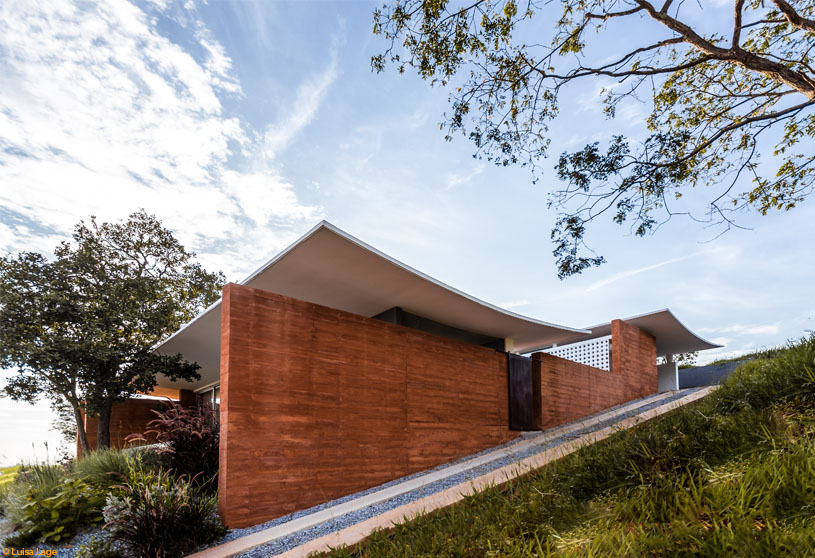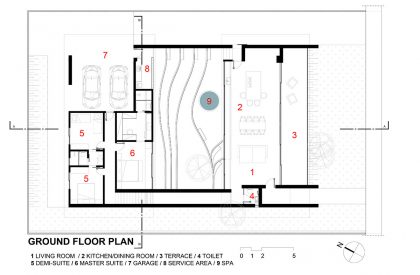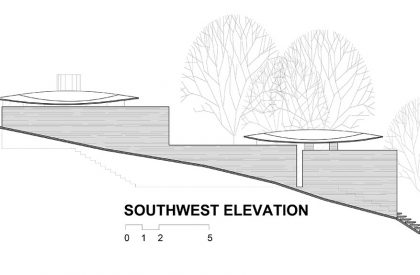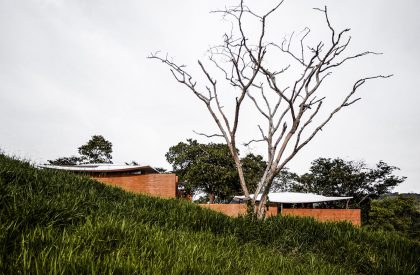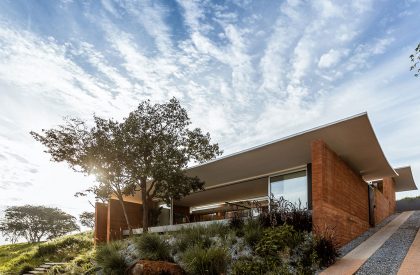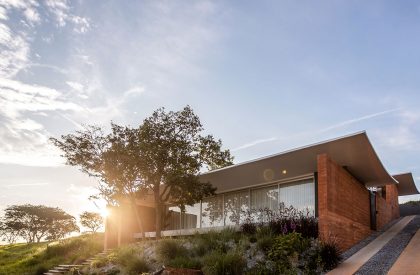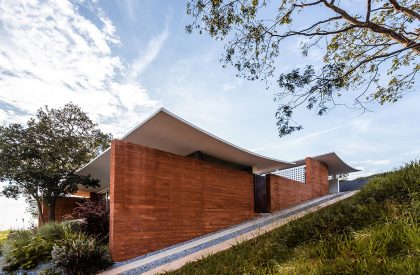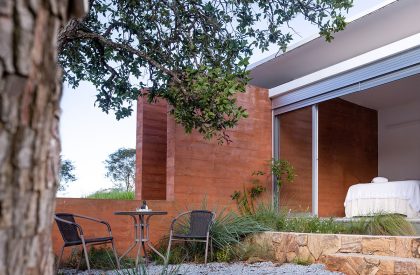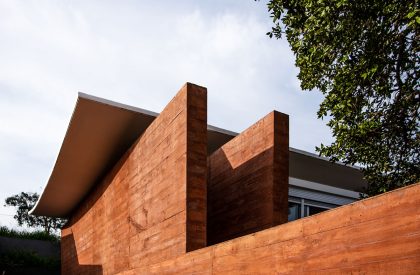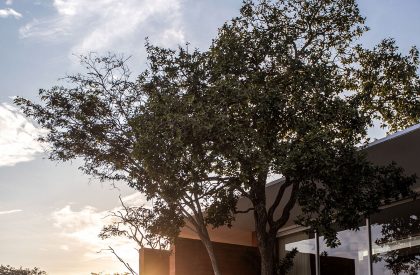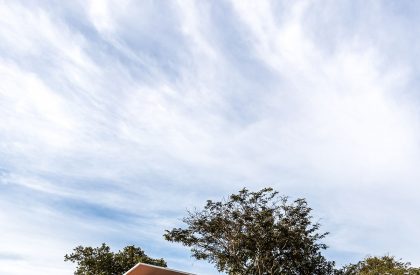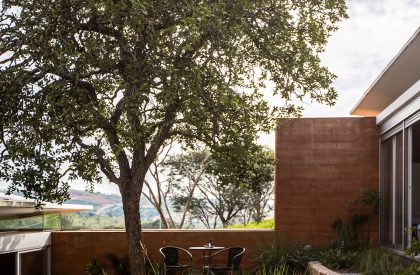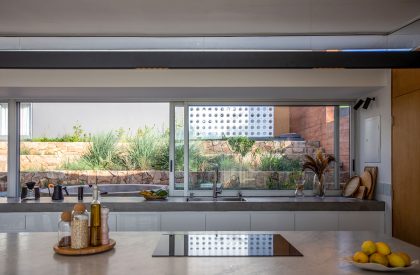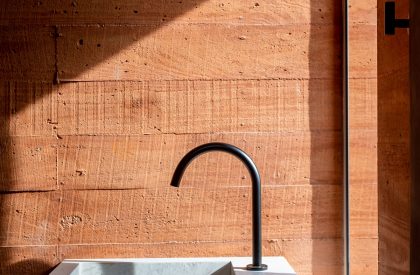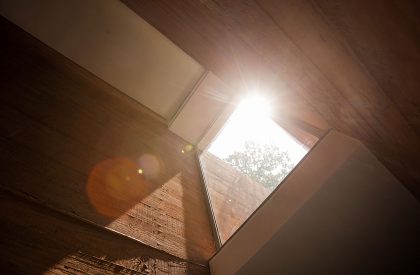Excerpt: Café House, designed by Tetro Arquitetura, is divided into two blocks under the curved slabs: the social and the intimate. The design makes connections between residents and the house through poetic language and creates symbols that refer to the culture of the place or the people who will inhabit the space.
Project Description
[Text as submitted by architect] The Café House is located in the Cerrado region, in the interior of the state of Minas Gerais, which is a place of rural landscape, where the image of red earth and twisted tree trunks predominates. From where, as in all Minas Gerais territory, coffee is an invitation to a long conversation.
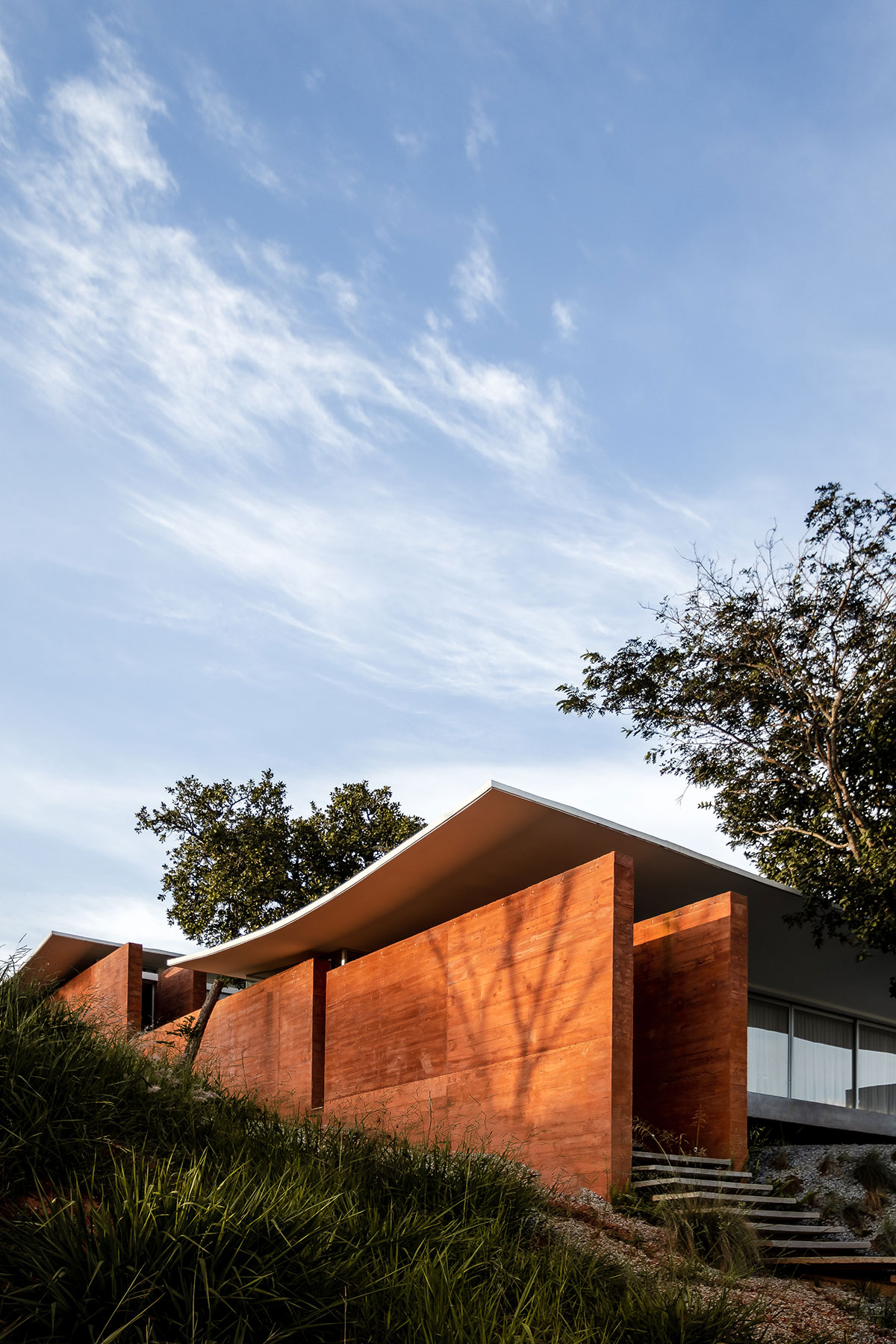
Thinking about an architecture that interprets the context in which it is inserted, making a sensitive reading about the place, the culture and the people who will inhabit the space can be one of the best ways to find the answers for the creation of design concepts. The design for this house sought an understanding and connection between the place and the residents, their habits and interests. In this sense, understanding how much coffee is an important drink for future residents raised the following question: How to make a project that represents in its concepts, subjectively, the characteristics of coffee?
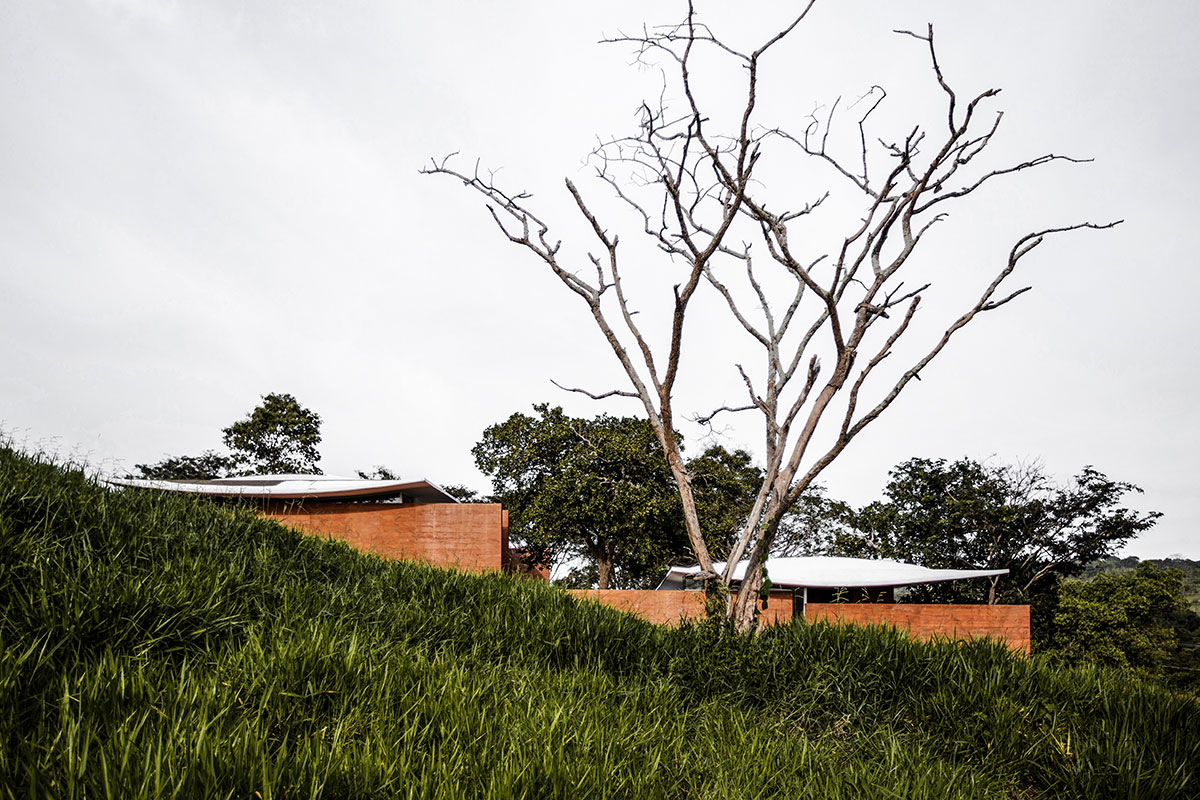

Seeking references in the drink itself.
The quality of coffee is greatly impacted by the characteristics of the land and climate where it is grown. In addition, the drink is perhaps the one most related to the air, being recognized by its aroma. In this sense, earth and air were the great inspirations. Weight and lightness. Thus, the materialization of this concept took place through the creation of two main elements that represent this contrast. The thick pigmented concrete side walls refer to the earth and the two thin, white and curved slabs that “float” over the house refer to the air. They are like two sheets of paper resting on the walls that seem to sprout from the ground.
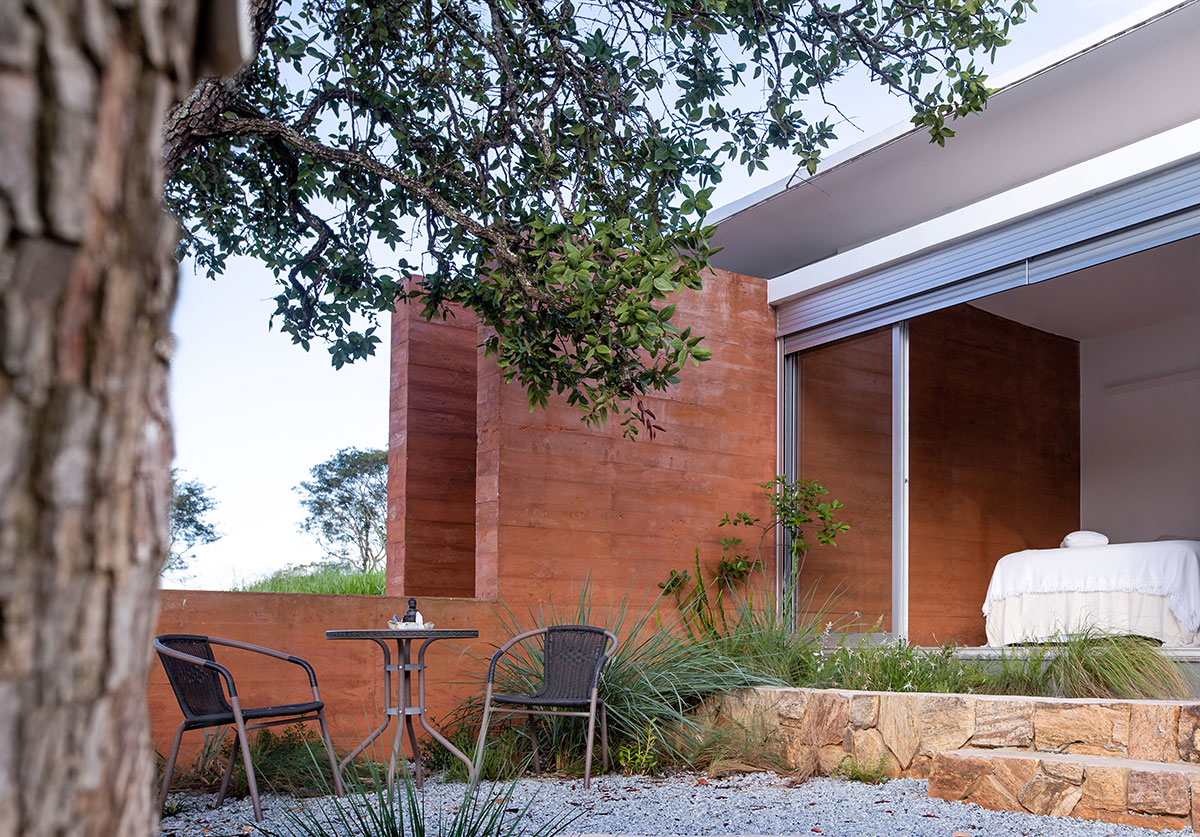
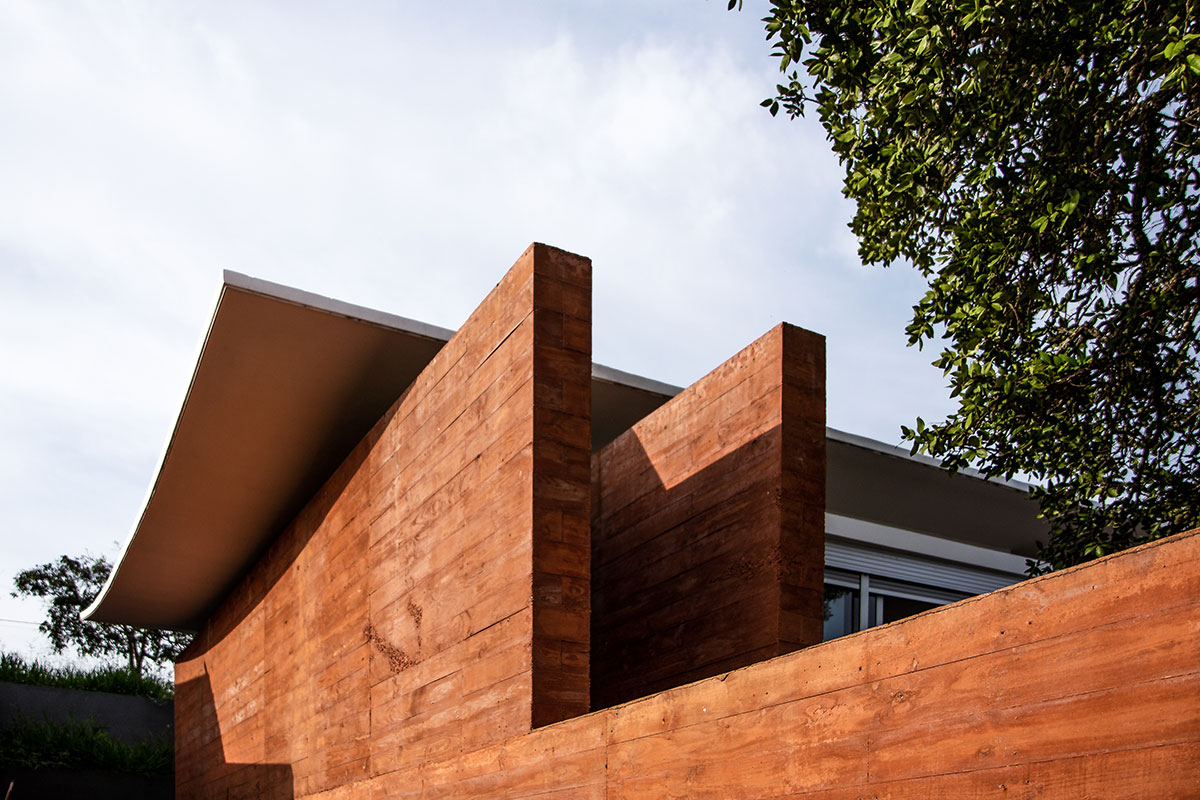
The house’s program was divided into two blocks under the curved slabs: the social and the intimate. To circulate between one block and another, a corridor was created between two earthen walls. This space is a preparation for moving between the two distinct atmospheres of the house.
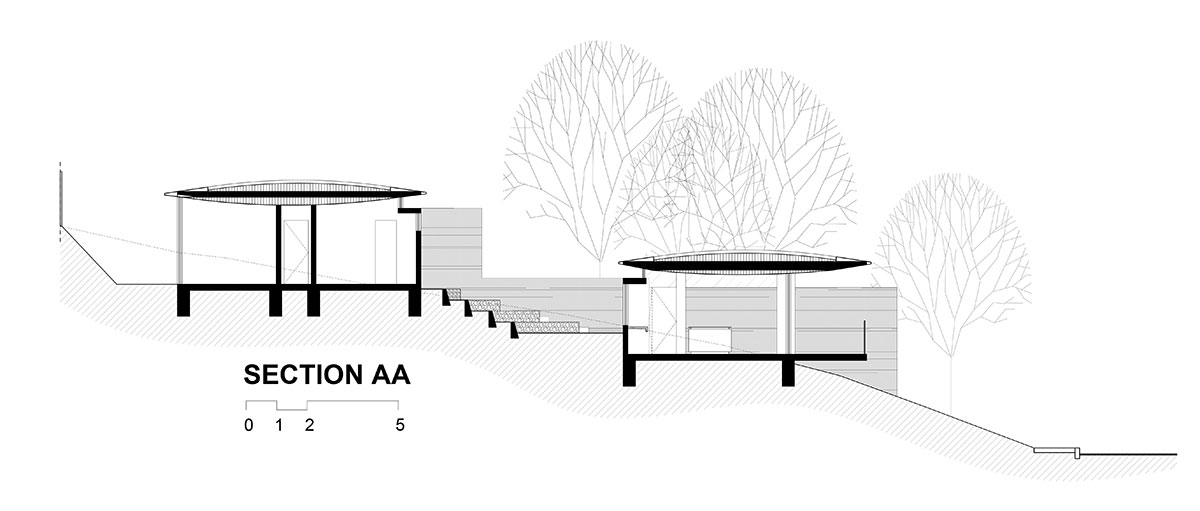
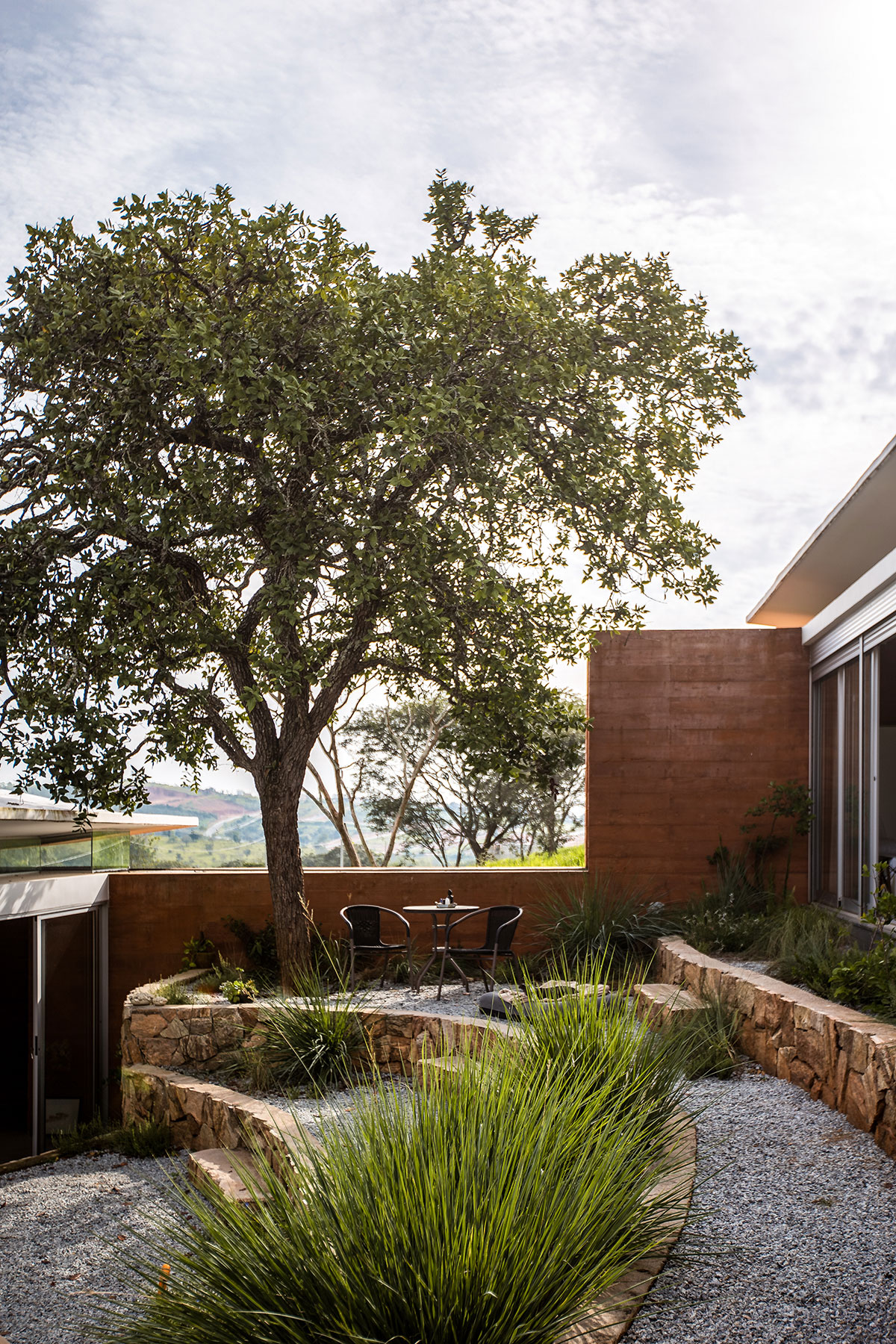
The house, while establishing a connection with the residents, was a response to reading about the place. The earth walls lead to the view. The terrain remains untouched and the topography remains the same. The trees were not cut down and now establish new relationships with the built volumes. These were implanted in the original dimensions of the land and between them, a stepped garden was developed.
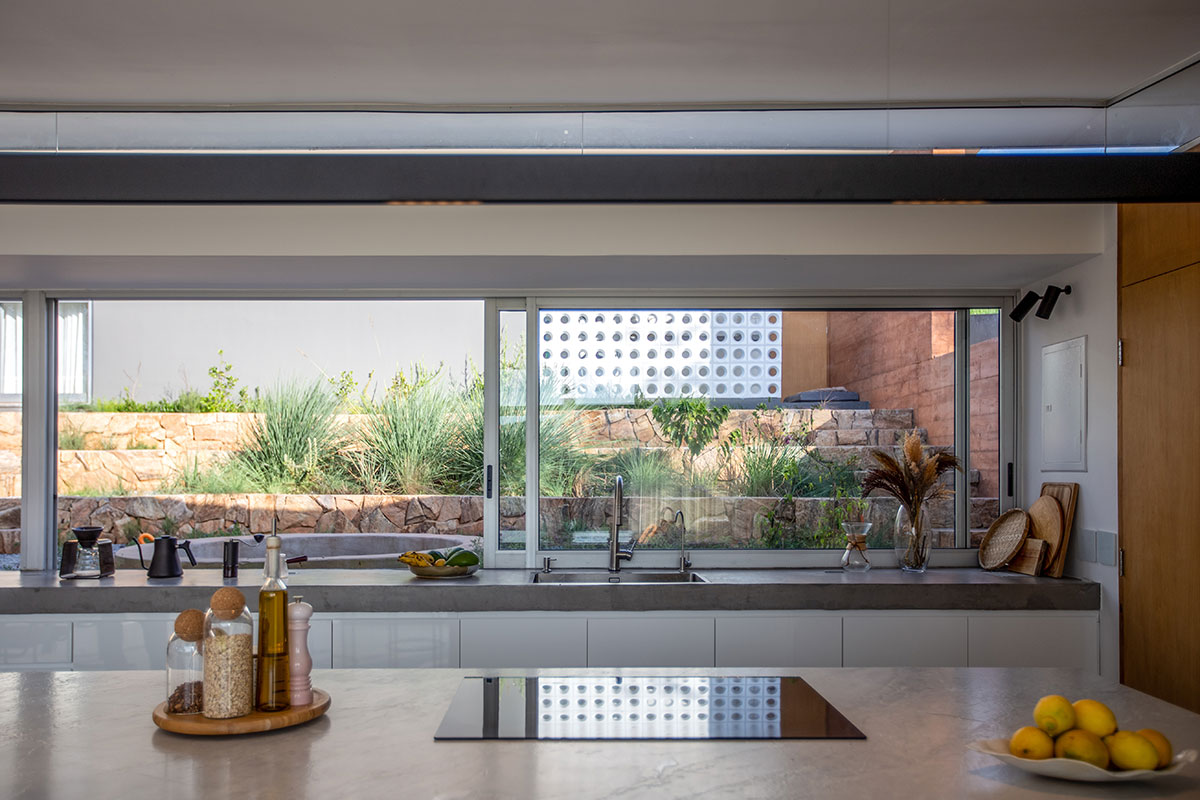
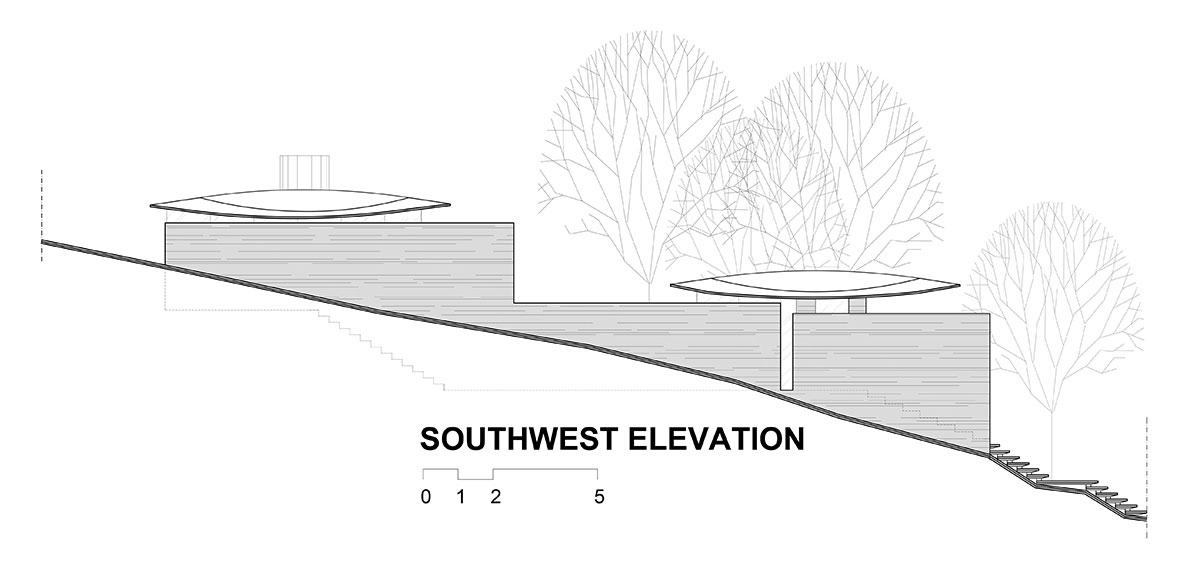

The project sought to understand how architecture can, through poetic language, make connections between residents and the house and create symbols that refer to the culture of the place or the people who will inhabit the space.
